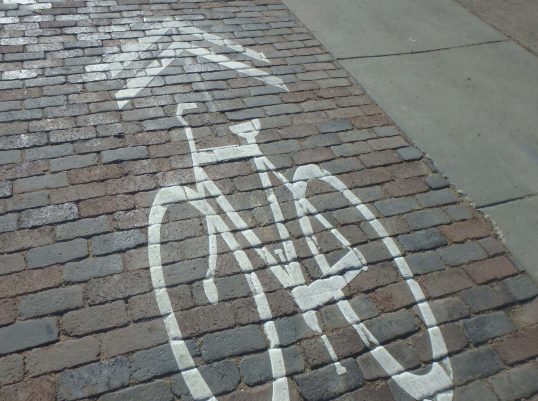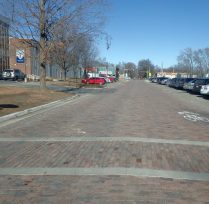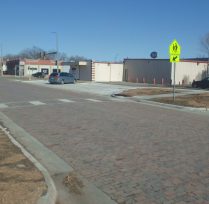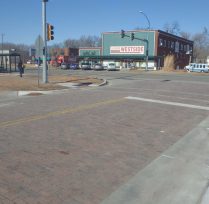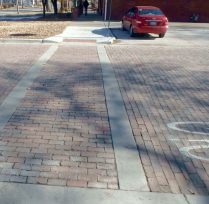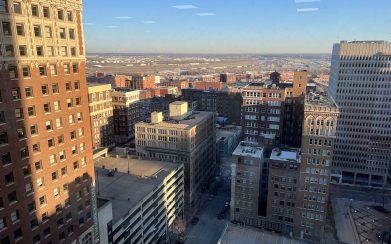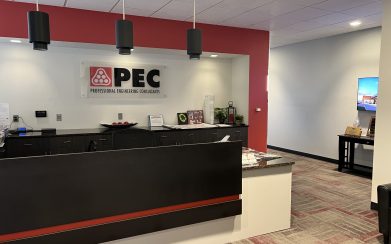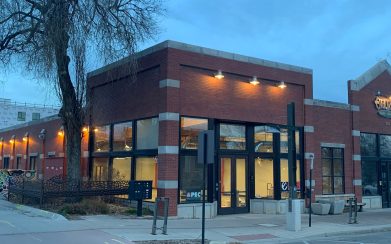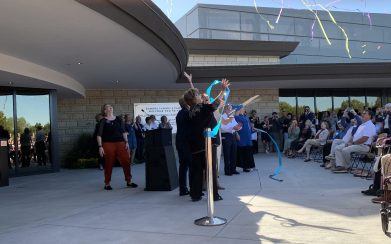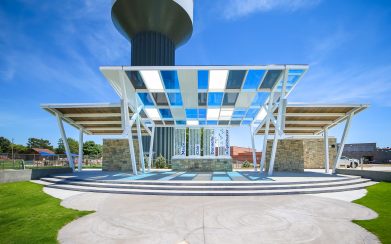Accommodating Schools and Emergency Vehicles
Clay Street is located in an older part of town, adjacent to numerous historical districts including Topeka High School. City officials, PEC and Bettis worked together to complete the job in sections, so not more than one block was closed at a time. The project team’s careful planning paid off as the street opened to traffic two weeks ahead of schedule.
The project phasing plans were established to assure adjacent intersections along Clay Street were not closed concurrently. This decreased the inconvenience for residents, provided access to Cair Paravel Latin and Mater Dei Catholic Schools, accommodated Topeka High School traffic, and allowed emergency services routes during construction for Fire Station No. 4 situated on Clay Street.
“Construction had to accommodate two different schools and their different schedules,” said Stewart. “The project also had to be split in the middle of the 800 block of SW Clay to maintain access for the Topeka Fire Department at Fire Station No. 4.”
Project schedule and construction management for this project was critical. A detailed construction sequencing and traffic control plan was developed as part of the design and was closely adhered to by the contractor. During construction, traffic control plans allowed for student pickup and dropoff at both school locations.
The city held public meetings to inform neighbors of the planned work schedule and to give access to city officials and PEC engineers to answer questions. The project team also set a plan for continually updating the neighborhood on when and how they would be impacted during construction.
When concerns were raised by the owners about access from the homes to the street, the city and PEC incorporated the replacement of all courtesy walks for each property. Because the school traffic was also a major concern for the neighborhood community, construction was scheduled in front of the schools while school was out during the summer session.
“Our team decided that a two-year construction schedule would be best in this situation so that each block could be closed for construction while maintaining traffic in all other blocks,” said Stewart.
Minimizing traffic concerns
The team also came up with other methods to minimize traffic concerns:
- The project phasing plans were established to assure adjacent intersections along Clay Street were not closed concurrently.
- A detailed traffic control plan was developed and closely followed during construction.
- Close coordination and updates with the Topeka Fire Department allowed access to Fire Station No. 4 and knowledge of which phase/block was closed.
- Waterlines were installed with trenchless methods under 10th Street, 8th Street, and 6th Street to avoid traffic disruptions on the busiest streets.
- The existing street grades were low but were maintained under tight tolerances to match existing driveways and tie-in points.
